Abstract
Between 1 January 1970 and 31 December 1979, a study of the concentration of viruses in surface water was carried out by 4 virological laboratories in different regions of the German Democratic Republic. All these laboratories used the same methods for virus detection.
Altogether 1908 samples from 30 sampling points were evaluated. The rate of virus isolation ranged from 8% to 92% with a mean of 20%. There were considerable differences in isolation rate among the sampling points, and the rate for any particular point varied from year to year.
The mean value of virus concentration, determined by the most probable number technique, was 2.7 cytopathogenic units (CU) per litre, while the maximum was 22.1 CU/litre. Viruses seen throughout the 10-year investigation included poliovirus, types 1, 2, and 3, echovirus types 6, 11, and 30, and coxsackievirus B 3 and B 5; echovirus 7 and 24, coxsackievirus B 1, and adenovirus 5 were seen occasionally. The results of the study reflected the high level of use of surface waters in the German Democratic Republic.
Where water is intended for human use, e.g., as drinking-water or for recreation, reasonable safety measures, such as water treatment and disinfection, should be taken, in order to ensure that the level of viral contamination is within the permissible limits.
Full text
PDF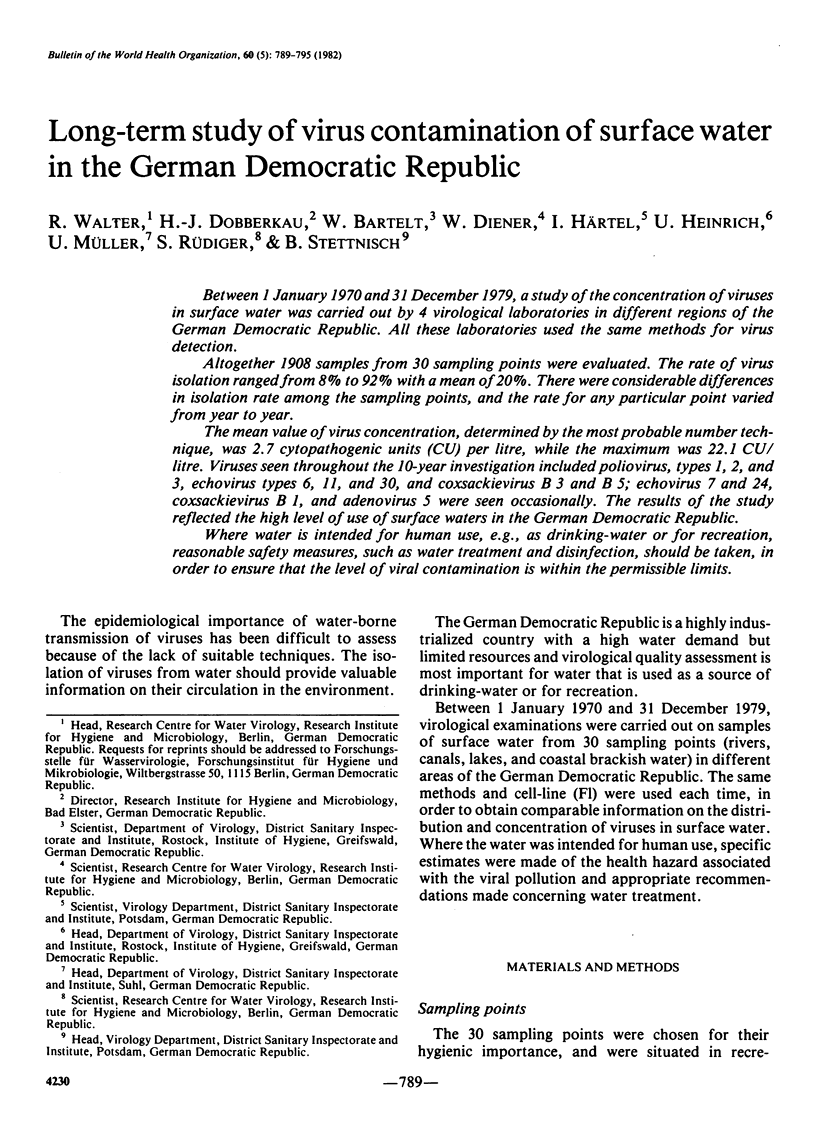
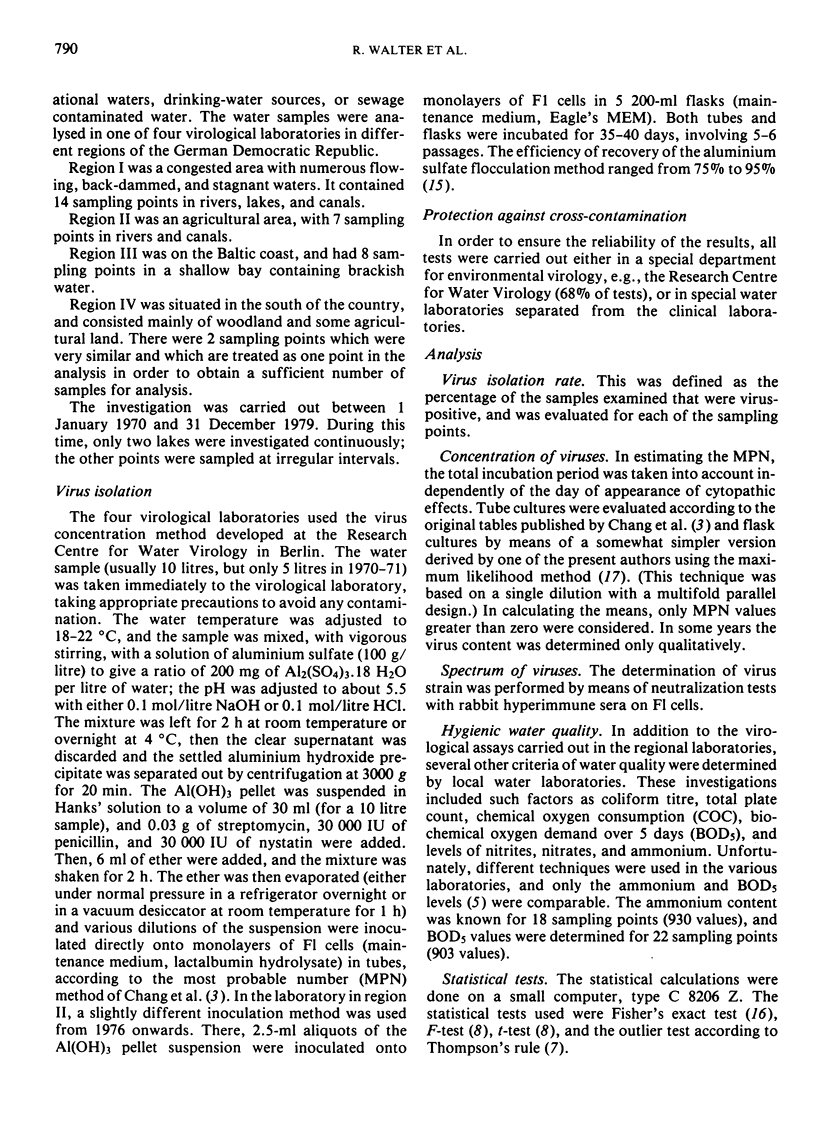
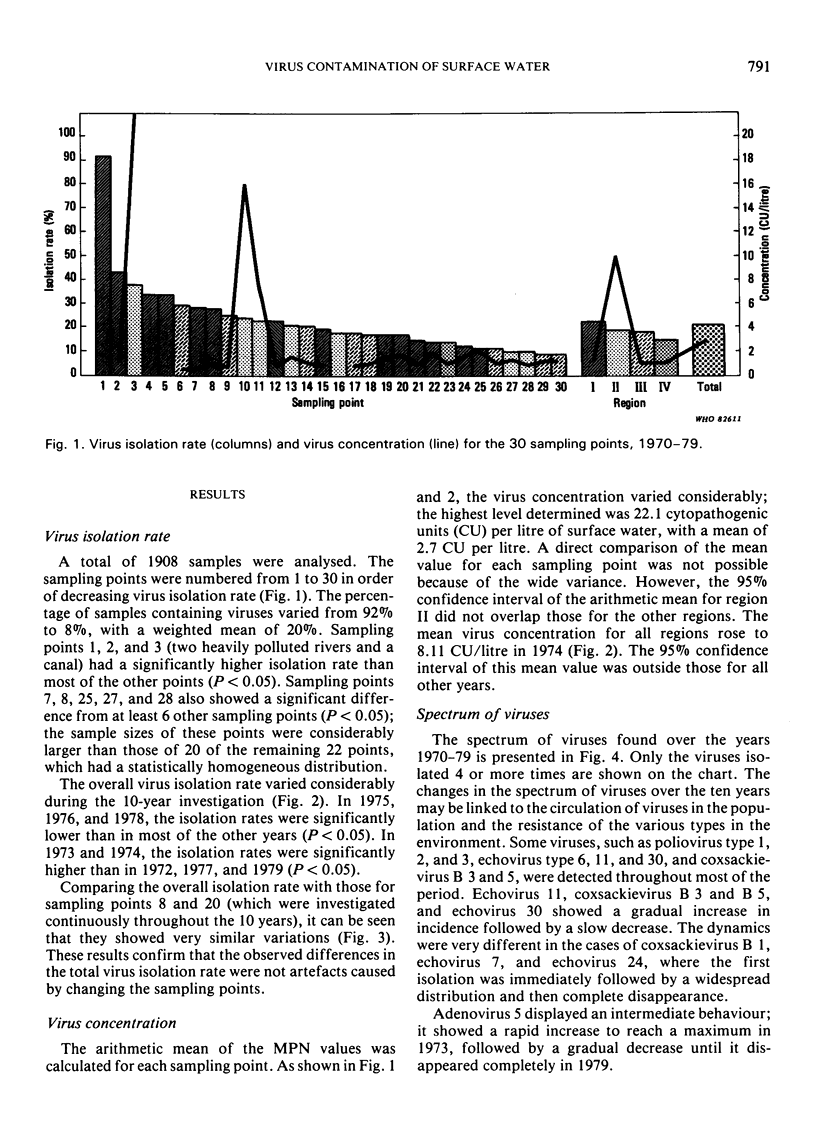
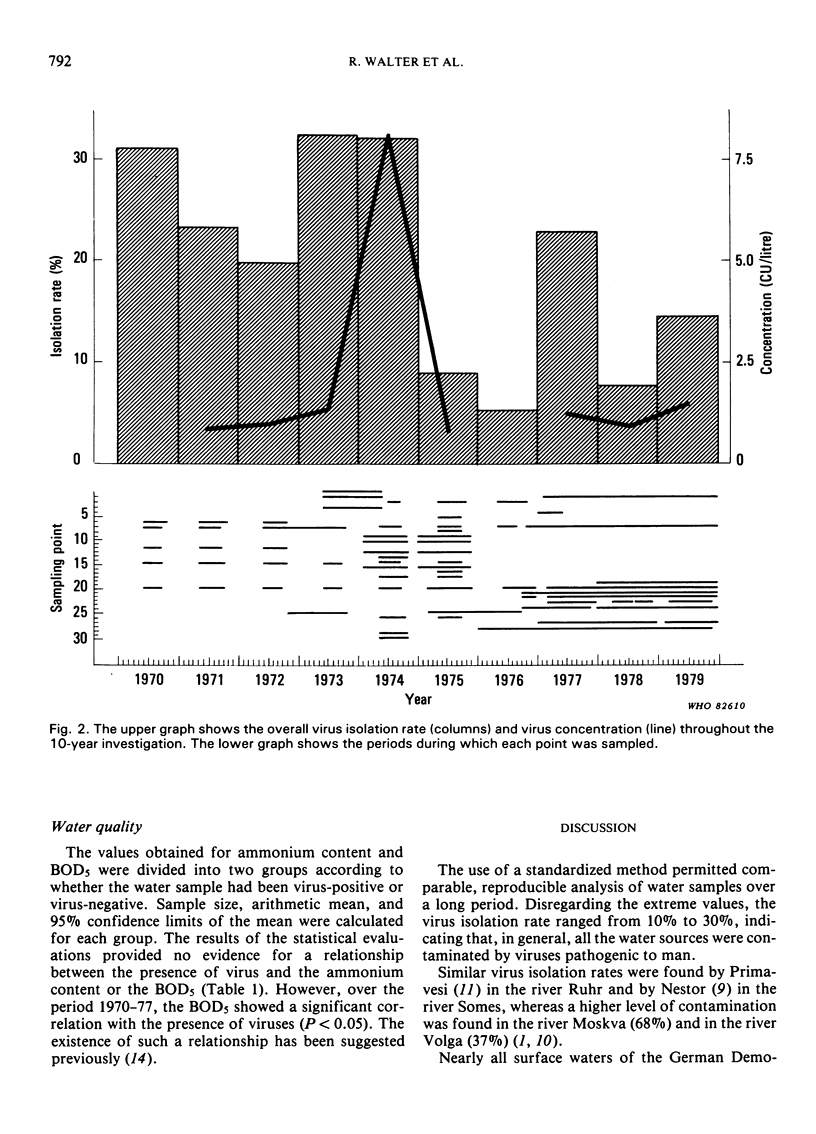
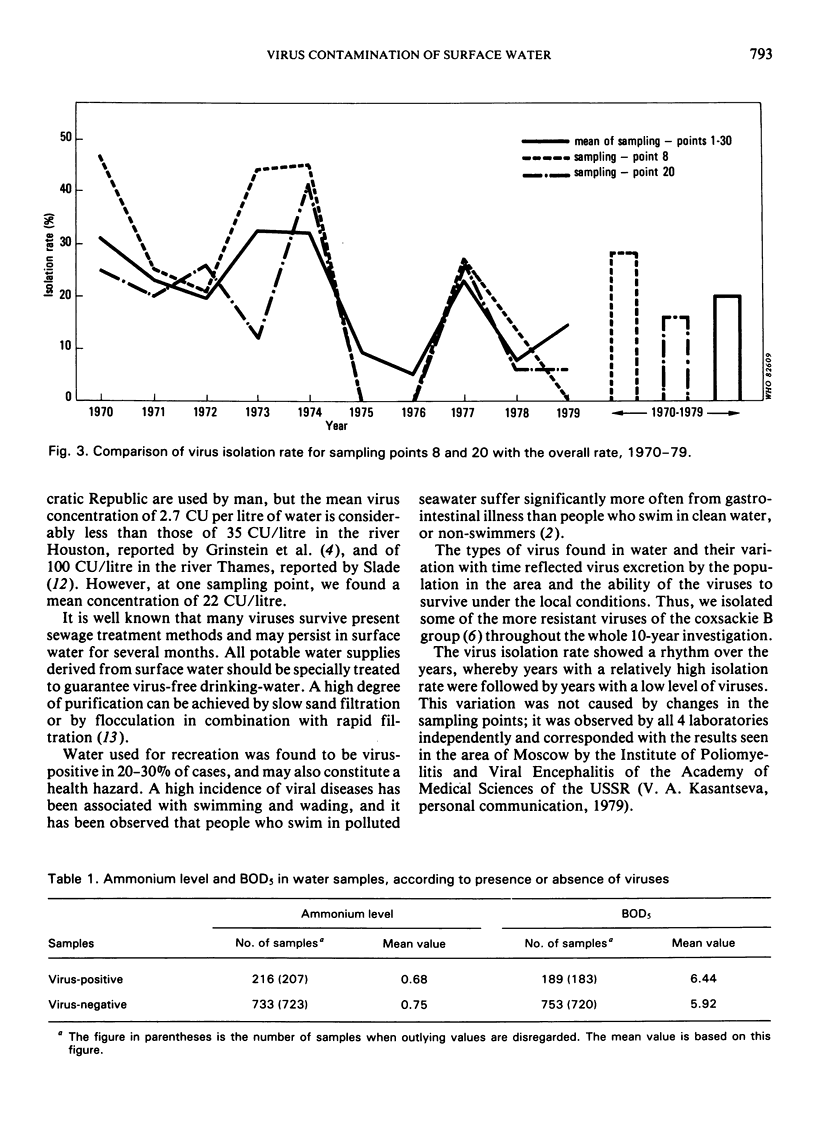
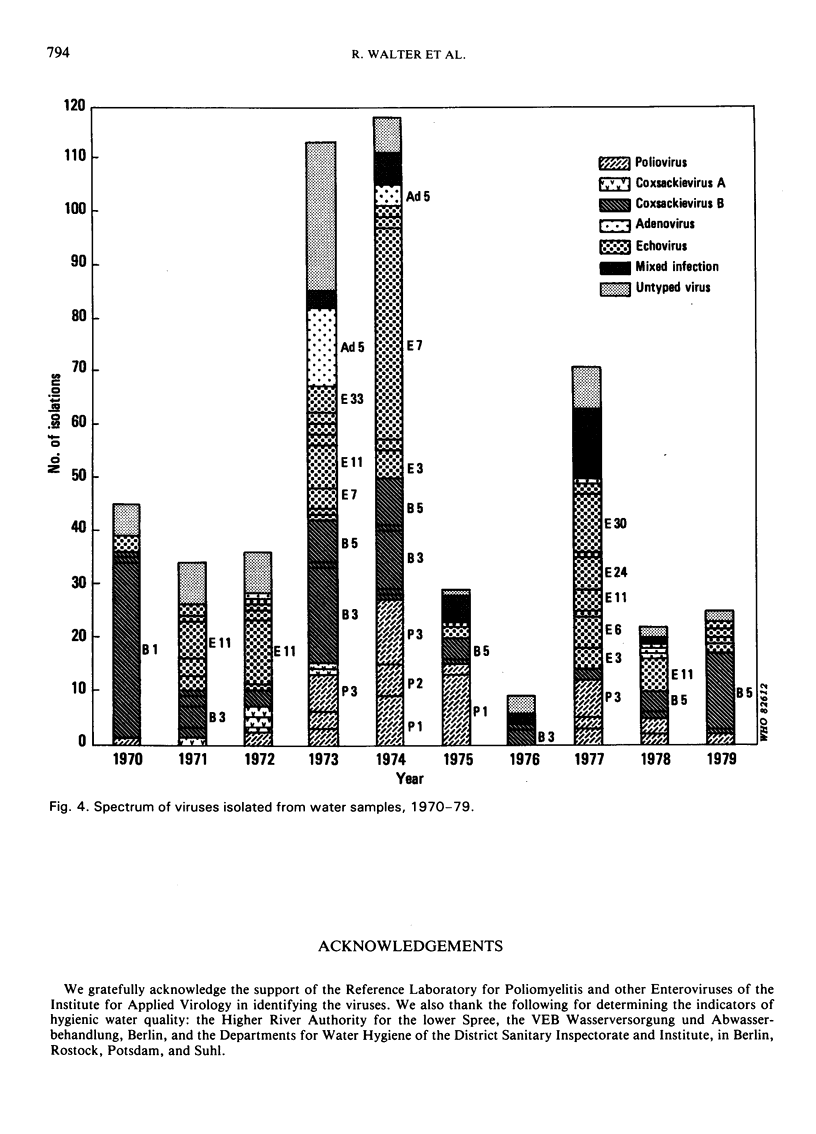
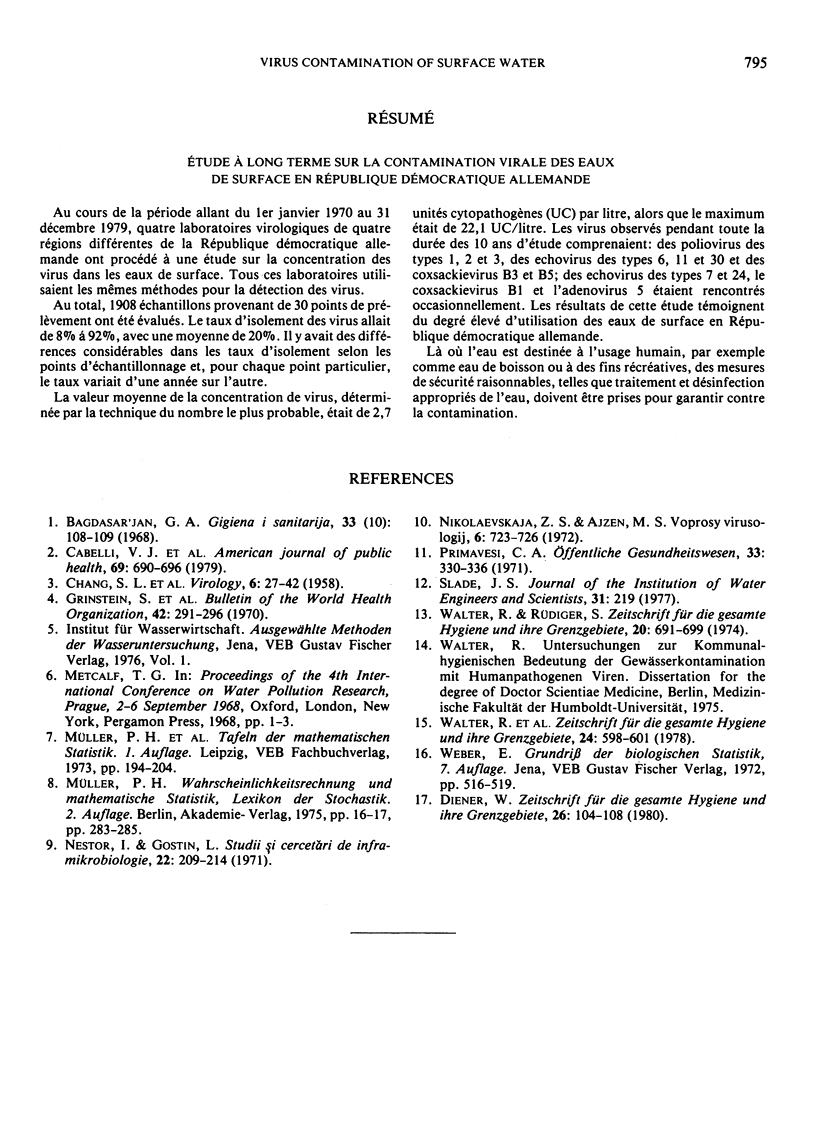
Selected References
These references are in PubMed. This may not be the complete list of references from this article.
- Agurell S., Berlin A., Ferngren H., Hellström B. Plasma levels of diazepam after parenteral and rectal administration in children. Epilepsia. 1975 Jun;16(2):277–283. doi: 10.1111/j.1528-1157.1975.tb06058.x. [DOI] [PubMed] [Google Scholar]
- CHANG S. L., BERG G., BUSCH K. A., STEVENSON R. E., CLARKE N. A., KABLER P. W. Application of the most probable number method for estimating concentrations of animal viruses by the tissue culture technique. Virology. 1958 Aug;6(1):27–42. doi: 10.1016/0042-6822(58)90057-6. [DOI] [PubMed] [Google Scholar]
- Cabelli V. J., Dufour A. P., Levin M. A., McCabe L. J., Haberman P. W. Relationship of microbial indicators to health effects at marine bathing beaches. Am J Public Health. 1979 Jul;69(7):690–696. doi: 10.2105/ajph.69.7.690. [DOI] [PMC free article] [PubMed] [Google Scholar]
- Diener W. Uber einige Methoden zur quantitativen Virusbestimmung aus Primärmaterialien. Z Gesamte Hyg. 1980;26(2):104–108. [PubMed] [Google Scholar]
- Grinstein S., Melnick J. L., Wallis C. Virus isolations from sewage and from a stream receiving effluents of sewage treatment plants. Bull World Health Organ. 1970;42(2):291–296. [PMC free article] [PubMed] [Google Scholar]
- Nestor I., Gostin L. Cercetări asupra răspîndirii unor virusuri enterice în mediul comunal. Stud Cercet Inframicrobiol. 1971;22(3):209–214. [PubMed] [Google Scholar]
- Primavesi C. A. Die Virologie in ihrer Bedeutung für die Wasserhygiene. Offentl Gesundheitswes. 1971 Jun;33(6):330–336. [PubMed] [Google Scholar]
- Walter R., Bagdasaryan G. A., Rüdiger S. t., Lovtsevich E. L., Lepachina N. K. Untersuchungen zur vergleichenden Beurteilung der Effektivität zweier Methoden der Viruskonzentrierung aus Oberflächen- und Trinkwasser. Z Gesamte Hyg. 1978;24(8):598–601. [PubMed] [Google Scholar]
- Walter R., Rüdiger S. Die kommunalhygienische Bedeutung von Virusisolierungen aus Oberflächengewässern. Z Gesamte Hyg. 1974 Oct;20(10):691–699. [PubMed] [Google Scholar]


